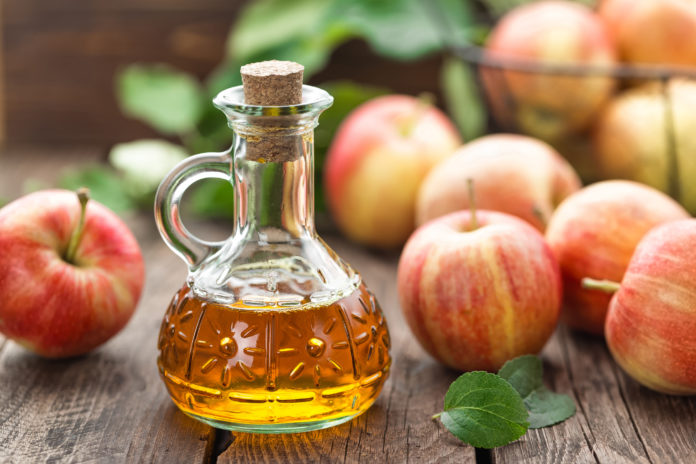Vinegar has a long tradition as a medical treatment. For example, Hippocrates (420 BC) used vinegar as a medicinal agent to clean wounds. American doctors used vinegar as a therapeutic agent in the late 18th century for various ailments, including stomachache, swelling, croup, and poison ivy. Today vinegar products are popular in the health food industry for digestive disorders, weight, and blood sugar balance. I will review what the credible uses are for in this article.
The word vinegar comes from the French vin aigre, which means “sour wine.” Vinegar can be made from almost any fermentable carbohydrate, including wine, molasses, dates, apples, pears, grapes, berries, melons, coconut, honey, potatoes, beets, and grains. Vinegar is often made by the process of fermenting fruit juices with yeast into wine and then further fermentation by bacteria that convert acetic acid into vinegar. Acetic acid is what gives vinegar its tart flavor and pungent odor. Vinegar also contains vitamins, mineral salts, amino acids, polyphenols, and organic acids. The FDA required a product to have at least 4% acetic acid to be labeled “vinegar.” Most cider vinegars, such as the popular apple cider, contain 5% to 6% acetic acid. Interestingly, it is the acetic acid that blocks the absorption of starch into the bloodstream (and there may be other mechanisms that reduce blood sugar levels).
Antimicrobial Properties
Vinegar was used by Hippocrates (460-377 BC), the father of modern medicine, to treat infections and clean wounds. Modern studies demonstrate that vinegar is good for cleaning foods and for food preparation, but not great for treating skin infections. It is, however, effective for cleaning dentures!|
Tame Blood Sugar with Vinegar
Research has shown that adding vinegar to rice reduces the Glycemic Index (GI) by 20% to 35%. GI is how fast blood sugar levels rise after consuming a food. Additional research found that taking vinegar with standardized amounts of acetic acid 30 minutes after consuming white bread reduced blood sugar and insulin levels. Also, those who took vinegar with their white bread felt less hungry compared to those who consumed white bread only. A different study found that vinegar taken along with bread reduced blood sugar levels by a whopping 31.4%!
There are several studies that show when vinegar is consumed before a meal that it can reduce blood glucose levels by an impressive 20% to 33%! The most noticeable benefits are for people with Type 1 or Type 2 diabetes and especially when the meal has a high glycemic rating. Supplementation with vinegar has also been shown to decrease insulin and triglycerides in addition to blood sugar levels, as published in the mainstream journal Diabetes Care.
There has been at least one study done with vinegar supplementation and weight loss, but the results were not very significant. Someone with diabetes may lose weight as the result of improved blood sugar control, but it does not appear to cause weight loss directly.
A typical dosage is one tablespoon diluted in water (8 ounces) before each meal or the two larger meals of a day (larger meals). Be aware that excessive intake may cause throat or stomach irritation. Start with 1-2 ounces to see how well you tolerate vinegar before using higher doses. If you have diabetes, it is also essential to start with lower doses to see how your blood sugar levels respond. Also, apple cider vinegar capsules are commonly available. A typical amount is 2-3 capsules taken with water before each meal.
Dr. Mark Stengler NMD is a bestselling author in private practice in Encinitas, California. His weekly newsletter Dr. Stengler’s Health Breakthroughs, is available at www.americasnaturaldoctor.com
REFERENCES:
Johnston CS, Gaas CA. Vinegar: medicinal uses and antiglycemic effect. MedGenMed. 2006;8(2):61. Published 2006 May 30.
Mitrou P, Raptis AE, Lambadiari V, et al. Vinegar decreases postprandial hyperglycemia in patients with type 1 diabetes. Diabetes Care. 2010;33:e27.
Mitrou P et al. Vinegar Consumption Increases Insulin-Stimulated Glucose Uptake by the Forearm Muscle in Humans with Type 2 Diabetes. J Diabetes Res. 2015;2015:175204.

